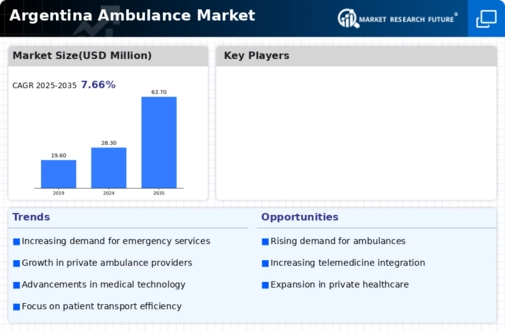The Argentina Ambulance Market is characterized by a diverse and competitive landscape, comprising various players aiming to provide efficient emergency medical services. The growing need for rapid medical response, influenced by urbanization, increased population density, and the rising occurrence of medical emergencies, has spurred investment in ambulance services.
Companies within this market are focusing on enhancing their response times and the quality of care while navigating regulatory frameworks and cost management. Competitive dynamics are further shaped by technological advancements, such as the integration of telemedicine and advanced monitoring systems in ambulances, which help improve patient outcomes and operational efficiencies.
It benefits from a fleet of well-equipped ambulances, staffed with trained medical professionals, which enhances its service delivery quality. The dedication to ongoing staff training and adherence to regulatory standards demonstrates its commitment to excellence, thereby strengthening customer loyalty and trust.
Emergencias 911 is another significant player within the Argentina Ambulance Market, well-recognized for its comprehensive emergency response services. The company offers a robust range of key products and services, which include ambulatory transport, critical care response, and pre-hospital emergency care.
It holds a competitive edge through its advanced fleet equipped with cutting-edge medical technology and emergency care protocols. The market presence of Emergencias 911 is notable in urban hubs, where it has established a strong reputation for reliability and efficiency.
Strategic mergers and acquisitions have enhanced its operational capabilities, allowing for quicker and more effective response mechanisms. The company is dedicated to continuous improvement in service quality, implementing innovative solutions that cater to the evolving healthcare landscape in Argentina, positioning itself as a leader in the emergency medical services domain.











Leave a Comment